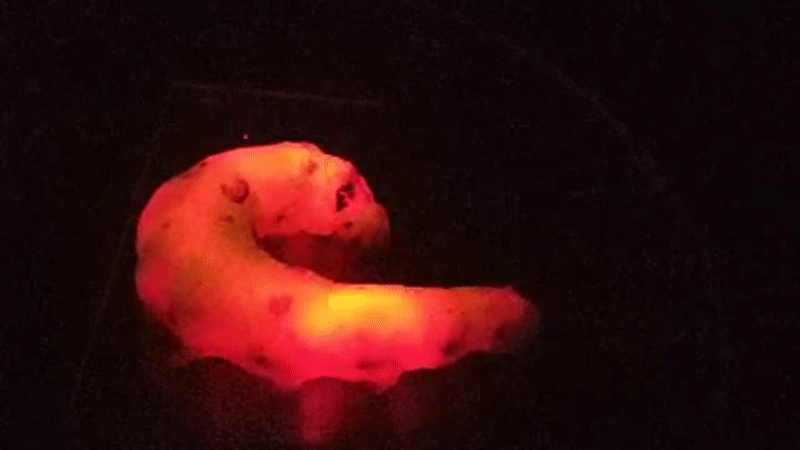Silkworms Fed Quantum Dots Shine Bright Under Ultraviolet Light, Produce Fluorescent Red Silk
Caterpillars that ate carbon dots derived from mulberry leaves glowed a scarlet color that lasted until the second generation of worms

In a new study, silkworms were fed nanoscale crystals called quantum dots that gave the insects' bodies, silk, eggs and cocoons a rosy glow under ultraviolet light, reports Alex Wilkins for New Scientist. When the moths emerged, they had a light pink gleam as well.
Previous studies used various dyes or gene editing to create silkworms that produce fluorescent material. However, those methods are costly and may introduce harmful mutations to the worms. Published last month in Advanced Materials, the new study may pave the way for dazzling new textiles and biomedical research methods.
“Fluorescent silkworms are an excellent model for bioimaging research,” says Huan-Ming Xiong from the Fudan University in China to New Scientist. “Now, the laser confocal microscope and animal imaging system are not needed, because we can see the fluorescence from the body directly by the naked eye.”
Nanoscale particles called quantum dots are so small they are subject to some strange effects of quantum physics. Each dot is typically between two and ten nanometers on average, according to the National Nanotechnology Initiative. These so-called artificial atoms can be made up of various elements, including carbon and silicon.
Depending on their size and which element they're made of, these tiny semi-conductors can emit different colored light through a concept called quantum confinement. Small dots produce short wavelengths of blue light, while large dots make long wavelengths of red light. Quantum dots have been used in solar cells and electronics, including television screens.
Several types of quantum dots were tested on the silkworms for safety and fluorescence. Carbon-based dots, which produce a red glow, met the requirements for the study. To create a safer alternative to genomic editing, researchers were able to derive quantum dots from mulberry leaves, which just so happen to be within a silkworm's dietary limitations, New Scientist explains.
Because the quantum dots emit light, silkworm cocoons glowed pink in daylight, but under ultraviolet light, they emitted a bright red color. Full-grown glowing moths could mate and lay fluorescent eggs normally, but when those eggs hatched, second-generation moths lost their shine, per New Scientist.
The method should be sustainable because it wouldn't require silk producers to change how they obtain silk or increase cost of materials, Antonios Kelarakis, a nanomaterials expert, at the University of Central Lancashire, not involved in the study, tells New Scientist.
Researchers are hopeful that fluorescent silk-derived materials could some day be used in biomedicine to track how drugs move through the body.
/https://tf-cmsv2-smithsonianmag-media.s3.amazonaws.com/accounts/headshot/gamillo007710829-005_0.png)


/https://tf-cmsv2-smithsonianmag-media.s3.amazonaws.com/accounts/headshot/gamillo007710829-005_0.png)